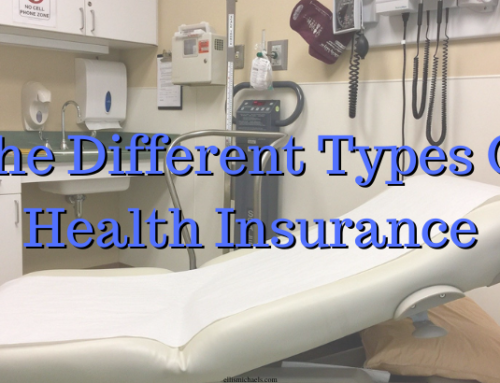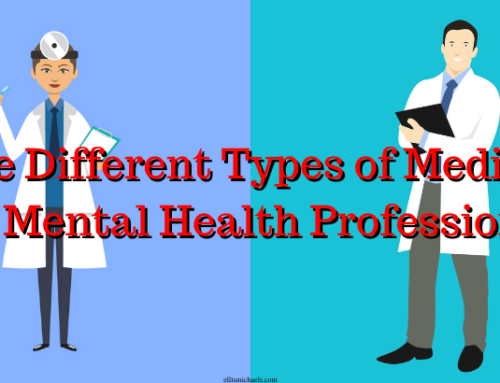Living with a chronic illness or disability presents you with a number of challenges. Those challenges can be physical, social, or mental. And any of those, especially a combination of them, can lead to another type of challenge: financial.
It can be hard enough to support yourself in today’s world when you’re perfectly healthy. If you’ve got an illness or disability, it can be nearly impossible. But what if I told you that you could be cashing in on your illness or disability?
That’s what this article is all about. We’re going to look at 5 ways to make money from your chronic illness or disability. Not everyone will be able to do all these things, but many will.
5 Ways To Make Money From Your Chronic Illness Or Disability
Table of Contents
I’m sure there are plenty of shady ways to make money from having a chronic illness or disability, but that’s not what I’m talking about here. These are all totally legitimate ways to make money. The amount of money you can make from each is up to you. Depending on how much effort you’re willing to put in (or capable of putting in), you can make anywhere from a few extra bucks to enough money to support yourself and your family.
So let’s just jump right into the 5 ways to make money from your chronic illness or disability. These are in no particular order.
1. Start A YouTube Channel
Did you know that you can earn a lot of money by making YouTube videos? And by a lot, I mean a lot, a lot. In 2019, the highest paid YouTuber made $26 million.1 His name is Ryan Kaji and he’s only eight years old. That’s right: eight.
 If you don’t know what YouTube is, well, you’re definitely in the minority. YouTube has 2 billion active users every month.2 That’s more than a quarter of Earth’s entire population!
If you don’t know what YouTube is, well, you’re definitely in the minority. YouTube has 2 billion active users every month.2 That’s more than a quarter of Earth’s entire population!
I’m going to assume you know what YouTube is. You might even be a YouTube addict… oops, I mean YouTube user like myself. But in case you’ve been seriously bedridden, in a coma, or for whatever reason don’t know what YouTube is, I’ll give a brief description.
YouTube is an online platform where users can watch and upload videos. There’s no fee to join and anyone over the age of 13 can use YouTube (though there are plenty of younger users like Ryan Kaji who likely have their parents’ help). Most YouTube users simply watch and sometimes comment on videos. But some also create and upload videos, too.
When you upload videos to YouTube, you can choose to let YouTube show advertisements at the beginning, middle, and/or end of your videos. If you do decide to show ads on your videos, you get paid for them depending on how many views and clicks the ad gets. While each view/click only generates a few cents, if you have millions of viewers, it can add up to some serious cash.
So, where does having a chronic illness or disability come into play? You could create a YouTube channel and post videos of you talking about living with your particular diagnosis and all the challenges it presents. These types of channels can get a lot of views and subscribers. And it’s a great way to vent about everything you’re going through.
 Now, I don’t want to give the impression that this will make you a lot of money in a short period of time. While it’s possible, it’s unlikely. Most successful YouTubers were regularly posting videos for a while before they started to make some serious money. But if you put out good content and put it out regularly, over time you can build up a following and make some serious bank.
Now, I don’t want to give the impression that this will make you a lot of money in a short period of time. While it’s possible, it’s unlikely. Most successful YouTubers were regularly posting videos for a while before they started to make some serious money. But if you put out good content and put it out regularly, over time you can build up a following and make some serious bank.
I’m going to write up an in-depth guide about making money with YouTube for those of us with serious illnesses in the future. But for now I’m just going to give a few tips to get you started. The first thing you need to do if you haven’t already is create a YouTube account. Then you can create/name your channel and start uploading videos.
Here are some tips that will grow your following quickly:
- Stay on topic. If your YouTube channel is about living with, say, multiple sclerosis (MS), don’t make videos about politics, baking, traveling, or anything else – unless it’s directly related to MS. A video about the struggles of getting to the polls and voting, baking, or traveling with MS is fine. But your YouTube channel has to focus on one thing (niche).
- Consistency is everything. You need to regularly put out content (videos). This can mean once a day, once a week, or even once a month. Whatever it is, it has to be consistent. Don’t just upload videos whenever you feel like it. Have a video-posting schedule and stick to it.
- Reach out to other YouTubers. If you’ve got a really rare disease, you might be the only YouTuber talking about it. But there are plenty of other YouTubers talking about plenty of other diseases that you can connect with. You can help each other promote your videos and gain subscribers. And you just might make some new friends in the process.
There’s a lot more that can be said about making money with YouTube, but that’s the basic idea. Start a channel, talk about your unique struggles living with your illness or disability, post regularly, reach out to other YouTubers, monetize your videos (let YouTube put ads on them) and, over time, you could start making some decent money.
2. Make and Sell Stuff
Do you like to design and create stuff? Awesome! What if I told you that, by making stuff related to your illness, you could earn some extra money and help to raise awareness about your diagnosis? It’s true. You can.
 The only limit to what disease-related items you can create and sell is your imagination. I used to know a woman with the same diagnosis as me who made and sold Behcet’s-related jewelry. She used to hand craft the most beautiful necklaces, earrings, bracelets, and anklets that said Behcet’s, Behcet’s Warrior, or something along those lines. Although she didn’t make enough money to totally support herself from it, she did create a nice side income for her and her family. And, most importantly, she loved doing it.
The only limit to what disease-related items you can create and sell is your imagination. I used to know a woman with the same diagnosis as me who made and sold Behcet’s-related jewelry. She used to hand craft the most beautiful necklaces, earrings, bracelets, and anklets that said Behcet’s, Behcet’s Warrior, or something along those lines. Although she didn’t make enough money to totally support herself from it, she did create a nice side income for her and her family. And, most importantly, she loved doing it.
Is there anything that you like to make? Jewelry? Arts and crafts? Straight-up art? Clothing? Something else? If so, you could turn your hobby into an income source. There are plenty of places online to sell your merchandise like Facebook Marketplace, eBay, Etsy, and many others. And, if the moderators allow it, you could even post in Facebook-and-other groups specifically for people with your diagnosis.
If you don’t like to actually make physical items but like to draw and design things, you can also make money from your diagnosis. There are plenty of online companies that allow you to put your designs on clothes, mugs, pens, bags, hats, and all kinds of other things. I’ll explain how it works using tee shirts and other clothes as an example.
Teespring is a company that allows you to put your designs on a variety of clothing. When I first used them five years ago, they could only do tee shirts. Now they offer hoodies, sweatshirts, tank tops, mugs, towels, and all kinds of other stuff. After you create your free Teespring account, you can put your designs on different clothes and sell them directly from the Teespring website. The best part? It doesn’t cost you a dime.
 Teespring does on-demand printing. That means if someone buys one of the shirts you designed, the actual shirt isn’t created until the order is placed. That way there’s no inventory to warehouse and no overhead costs. When you sell a shirt on Teespring, they take a small cut of the profit and you get the rest.
Teespring does on-demand printing. That means if someone buys one of the shirts you designed, the actual shirt isn’t created until the order is placed. That way there’s no inventory to warehouse and no overhead costs. When you sell a shirt on Teespring, they take a small cut of the profit and you get the rest.
That’s just one example of one company doing this, but there are many others. If you like to create stuff or make designs, you can turn that hobby into an income source. Have a cool design or a clever slogan? Slap it on a shirt and see if anyone wants to buy one. Make a “I have Lupus, you’re just Loopy” shirt. Or maybe if you’re pro-cannabis make a “Would you light this? I have arthritis” shirt with a drawing of someone lighting a joint.
Those are just two silly, off-the-top-of-my-head ideas. I’m sure you could probably do better – much better. But you get my point. There’s really no limit to what you could come up with. Create, design, and sell stuff related to your illness to make some extra cash.
3. Blog about your illness/disability
If you like to write, this is a great way to express yourself, raise awareness, and make money all at the same time. Starting a blog about your experience living with whatever illness you have can eventually turn into a serious income stream. You won’t start making money right away but, if you stick with it, you can make a lot of money.
 I’ve created several blog-style websites over the past six years, Live The Best Life Possible (LTBLP) being one of them. It’s not currently making me any money but that’s because I haven’t really monetized it yet. However, some of my other website do make me some serious money.
I’ve created several blog-style websites over the past six years, Live The Best Life Possible (LTBLP) being one of them. It’s not currently making me any money but that’s because I haven’t really monetized it yet. However, some of my other website do make me some serious money.
Here’s how it works in a nutshell: You create a website which is super easy if you use GoDaddy or one of the other website-creation options out there. After getting the basic look and feel of your site set up, which is also quite easy, start writing. Publish blog entries about living with your disease, you’ll start getting readers and, eventually, you can monetize your blog and start making money.
Many of the same rules to having a successful YouTube channel also apply to having a successful blog. You need to pick a niche (your diagnosis, for example) and stay on topic. You also need to publish content on a regular schedule, whether it’s daily, weekly, or monthly. And like with YouTube, you should reach out to other bloggers who write about their chronic illnesses.
4. Become a patient advocate
Have you been living with your diagnosis for a long time? Have you overcome obstacles in spite of your illness? Have you become educated about your disease and want to help others? If you answered yes to one or more of these questions, you might want to consider becoming a patient advocate.
A patient advocate is someone who helps others to navigate their way through the complex, confusing, and often downright-crazy medical system. They do a variety of things for their clients including:
 Going with patients to their appointments
Going with patients to their appointments- Identifying care problems through patient interviews
- Helping with insurance-related issues
- Managing patient payments and assisting with paying bills
- Dealing with insurance companies to resolve issues quickly
- Educating patients about the medical system
- Offering emotional support
These are just some of the things a patient advocate does. It can be incredibly rewarding work and lucrative, as well. Depending on how many hours you work, if you work for yourself or for an insurance company, and other factors, you can earn a decent living as a patient advocate. The average patient advocate salary in 2020 is $62,777 with most advocates making somewhere between $53,945 and $72,802.3
Patient advocates are a relatively new things and there are different paths you can take to becoming one. While no formal training or certification is required, there is an organization that offers certification in patient advocacy. The Patient Advocate Certification Board offers (unsurprisingly) board certification in patient advocacy. It’s not required if you decide to work independently. But if you want to working for an insurance-or-other company, you’ll want to get certified.
I’m glad patient advocates are now a thing. I’ve been saying they should exist for decades. Too many people get overwhelmed with the healthcare system. And what they don’t get is the care they need. Becoming a patient advocate can be incredibly rewarding in more ways than one.
5. Participate in medical studies
Scientists are always studying people with various illnesses and disabilities. It’s a good thing. Research leads to better treatments and gets us closer to understanding the underlying causes of our diseases. That, I’m sure you know. But did you know that you can make money by participating in medical studies?
 Many studies offer compensation to patients for participating in them. The average study pays between $50-300 per day.4 But some studies pay a lot more. It’s not uncommon for studies to pay thousands of dollars for participation. Some even pay in the five-digit range like the NASA study that offers $19,000 to participants willing to stay in bed for two months straight.5
Many studies offer compensation to patients for participating in them. The average study pays between $50-300 per day.4 But some studies pay a lot more. It’s not uncommon for studies to pay thousands of dollars for participation. Some even pay in the five-digit range like the NASA study that offers $19,000 to participants willing to stay in bed for two months straight.5
Some of you are probably thinking, “Two months in bed? That’s nothing. I’ve done twice that!” If you’ve been living with a chronic illness for a while, you’ve probably already done a lot of things that researchers are looking for: trying new medications, new products, new treatments, etc. So why not get paid for it?
If you’re diagnosed with a chronic medical condition, odds are there are scientists researching it. So how do you find these studies? You can ask your doctor, patient advocate, or other healthcare provider if they know of any paying studies you’d be a good fit for. Or you can look online. A good resource is Clinicaltrials.gov. It’s a government website that lists publicly and privately funded clinical studies all over the world.
Conclusion
If you’re living with a chronic disease, why not cash in on it? Now you know 5 ways to make money from your chronic illness or disability. Some of them take a lot of time and effort but can be incredibly rewarding.
These are just 5 ways to make money from your chronic disability or illness, but I’m sure there are others. How else could someone with a rare and/or chronic illness use it to make money? Please leave your answer in the comments section at the bottom. And if you haven’t already, please sign up for the EM mailing list to learn about new chronic-illness-and-other articles, books, and more.
Join the Ellis Michaels mailing list to stay up to date with the latest news about chronic illnesses, recent articles and other publications, and more.
References
1McKeever, V. (2019, Dec. 20). This eight-year-old remains YouTube’s highest-earner, taking home $26 million in 2019. CNBC.com.
2Aslam, S. (2020, Feb. 10). YouTube by the numbers: stats, demographics, & fun facts. Omnicore.
3Patient advocate salary in the United States. (2020, July, 27). Salary.com. Retrieved August 11, 2020 from https://www.salary.com/research/salary/posting/patient-advocate-salary
4How much do research studies usually pay? (2018, Dec. 20). Miami Clinical Research. Retrieved August 11, 2020 from https://miamiclinicalresearch.com/how-much-do-research-studies-usually-pay/
5Miller, T. (2019, Mar. 29). NASA will pay you $19,000 to stay in bed for 2 months – but it sounds like a miserable experience. CNBC.com.







Leave a Reply